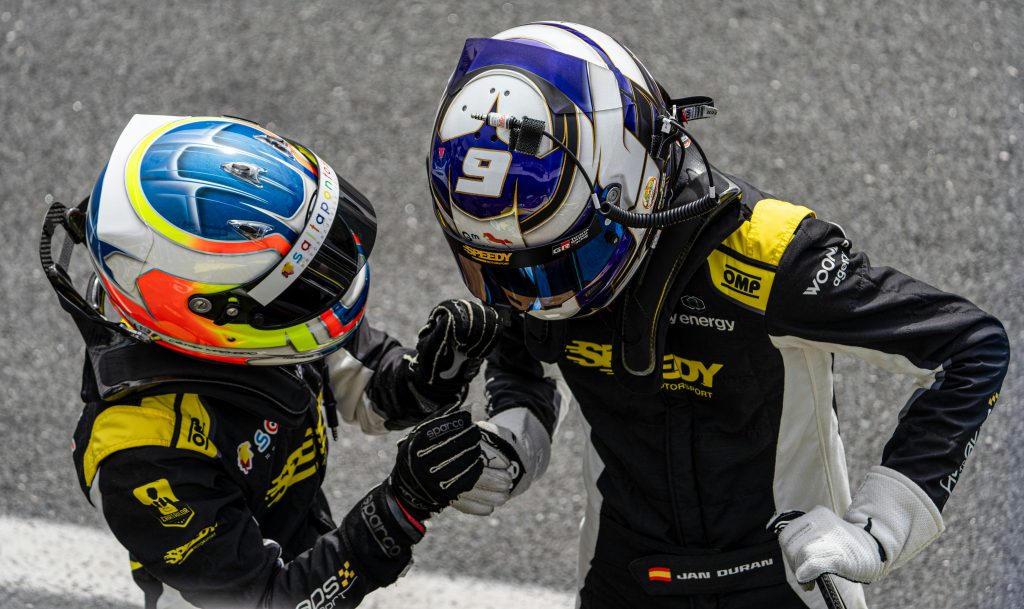Robbie Williams’ ‘Forbidden Road’ Snubbed by Oscars: A Deeper Dive into the Controversy
# Robbie Williams’ ‘Forbidden Road’ Snubbed by Oscars: A Deeper Dive into the Controversy
The 2025 Oscars have sparked controversy after disqualifying Robbie Williams’ song, “Forbidden Road,” from the Best Original Song category. The decision, while met with some understanding, has also ignited debate among fans and critics alike. Williams, known for his grace and humility, reacted with magnanimity to the news, showcasing his professionalism amidst the disappointment.
##### The Disqualification: A Technicality or a Deeper Issue?
While the official reason for the disqualification remains somewhat vague, reports suggest that technical aspects related to the song’s submission or eligibility criteria played a role. This raises questions about the transparency and clarity of the Oscar’s selection process. Did the rules need updating? Was there insufficient communication? These questions remain unanswered, leaving room for speculation and further fueling the discussion.
##### The Bigger Picture: Film Music and the Oscars
Beyond the specifics of “Forbidden Road’s” disqualification, the incident shines a light on the broader challenges facing film music in the modern era. The balance between originality, commercial appeal, and the artistic vision of the filmmakers is always a delicate one. The Oscars, as the pinnacle of cinematic achievement, carry a significant weight in shaping how film music is perceived and valued.
The use of CGI in the film also adds another layer to the conversation. While innovative, CGI characters often divide opinions. The success of CGI integration relies heavily on seamless blending with the narrative and emotional impact of the movie itself. A poorly executed CGI character can detract from the overall experience, potentially influencing the overall assessment of the film and its soundtrack. The success of integrating a CGI character can significantly impact the emotional resonance of the song within the film’s narrative and can be a major factor in its overall acceptance.
##### Robbie Williams’ Response: A Lesson in Grace
Robbie Williams’ response to the disqualification has been exemplary. His acceptance of the decision, without public outcry or negativity, speaks volumes about his character and professional maturity. In a world often characterized by controversy and outspoken reactions, his response offers a refreshing counterpoint, reminding us of the importance of grace and respect even in the face of setbacks.
##### What This Means for the Future of Film Music
The controversy surrounding “Forbidden Road” underscores the need for ongoing dialogue and refinement in the process of selecting and awarding film music. Clearer guidelines, improved communication, and perhaps a more transparent review process could help prevent similar situations from arising in the future. Furthermore, the event serves as a reminder that the world of film music is complex and often fraught with challenges, requiring a delicate balance between artistic expression and commercial realities.
The Oscars’ decision, while potentially disappointing for Williams and his team, may also spark positive change within the industry. It can provide opportunities for improved guidelines, heightened transparency, and a more robust system for judging film music. Ultimately, this controversy may contribute to making the Oscars’ selection process fairer and more meaningful in the years to come.
##### Beyond the Controversy: The Song’s Legacy
Regardless of the Oscars’ decision, “Forbidden Road” continues to be a testament to Williams’ songwriting talent. The fact that the song reached the shortlist, even if ultimately disqualified, is a significant achievement. The song’s legacy will be shaped not only by the awards it received but also by its lasting impact on listeners, its inclusion in the film’s context, and the ongoing conversation it sparked about the complexities of the film music industry.
This event is a fascinating case study that will likely be examined in future discussions about the Oscars and the criteria used for evaluating film scores and songs. It invites deeper conversations about fairness, transparency, the role of technology in filmmaking, and the ever-evolving nature of the film industry itself.
Tags: Awards, Best Original Song, CGI, Controversy, Disqualification, Film Music, Forbidden Road, Music Industry, Oscars, Robbie Williams, Robbie Williams Oscars Disqualification
Diplo’s Unexpected New Year’s Eve Revelation: A Live LSD Trip on CNN
## Diplo’s Shocking LSD Admission During CNN’s New Year’s Eve Broadcast
The world rang in 2025 with an unexpected twist thanks to DJ and music producer Diplo. During a virtual appearance on CNN’s New Year’s Eve Live with Andy Cohen and Anderson Cooper, Diplo revealed he was under the influence of LSD. The candid confession, delivered live to millions of viewers, instantly went viral, sparking widespread discussion and debate.
The seemingly impromptu admission unfolded during a segment with the CNN hosts. Diplo, joining from Los Angeles, shared details about his experience, creating a surreal and unforgettable moment for both viewers and the hosts themselves. While the specifics of his comments remain a topic of conversation, the very fact of a high-profile celebrity admitting to being on LSD during a live television broadcast is unprecedented.
This unexpected turn of events has triggered a significant online conversation. Social media platforms exploded with reactions ranging from amusement and shock to criticism and concern. Many praised Diplo’s honesty and openness, while others questioned the appropriateness of his actions given the public nature of the interview. Some users pointed to the potential implications for the perception of drug use among young audiences, and many continue to discuss the event across various online platforms.
The incident highlights the blurring lines between public image and private life in the age of social media, as well as the ongoing conversations surrounding drug use and mental health. Diplo’s admission is not just a viral moment; it serves as a catalyst for broader discussions about the public disclosure of substance use, mental wellness, and the responsibilities of public figures.
The impact of this revelation extends beyond the immediate viral buzz. It raises questions about the culture of live television and the preparedness of hosts to handle such unexpected situations. The implications for the future of live interviews, especially those incorporating virtual guests, remain to be seen. This instance might force a review of interview protocols, especially in situations with a level of informality.
Beyond the immediate controversy, Diplo’s unexpected confession might spark discussions about the stigma around psychedelic substances and their potential therapeutic applications. While the incident is undoubtedly controversial, it has undeniably captivated a global audience, prompting reflections on topics rarely discussed so openly in mainstream media.
The incident raises intriguing questions about the future of broadcasting, celebrity conduct, and the ever-evolving relationship between public figures and their audiences in the digital age. It’s a story that will continue to resonate long after the confetti has settled, prompting important conversations about many aspects of modern society.
While the incident is undoubtedly controversial, it has undeniably captivated a global audience, prompting reflections on topics rarely discussed so openly in mainstream media. Further analysis is required to understand the full impact of Diplo’s actions, both on public perception and the future of live television.
The fallout of this unexpected revelation is still unfolding, and the discussion it has ignited promises to be long-lasting and impactful.
Tags: Celebrity Confession, CNN, Controversy, Diplo, Diplo LSD Confession, Drug Use, Live TV, LSD, New Year's Eve, Social Media, Viral Moment
Citrus Bowl Heats Up: Bielema-Beamer Showdown Sparks Controversy
## Heated Exchange on the Sidelines: Bielema and Beamer’s Citrus Bowl Clash
The Cheez-It Citrus Bowl delivered more than just thrilling football; it served up a heated sideline confrontation between Illinois coach Bret Bielema and South Carolina’s Shane Beamer. The incident, which unfolded during the third quarter of Illinois’ 21-17 victory, saw Beamer visibly angered by Bielema’s actions, requiring intervention from his coaching staff to prevent a physical altercation.
Reports detail Bielema’s taunting as the catalyst for Beamer’s outburst. Eyewitnesses described Beamer’s initial disbelief before his anger escalated. ESPN sideline reporter Quint Kessenich captured the scene perfectly, highlighting Beamer’s shock and subsequent reaction to the perceived disrespect. The intensity of the moment was palpable, quickly becoming a major talking point among fans and analysts alike.
The post-game fallout added another layer to the already contentious situation. While Bielema addressed the media following Illinois’ win, Beamer also gave his account of the incident, providing a firsthand perspective on the events that transpired. The differing narratives only fueled the ongoing discussion, creating a divide in opinions surrounding who was at fault.
The controversy extended beyond the immediate participants. Prominent sports commentator Michele Tafoya weighed in, labeling Bielema’s behavior as “classless.” Her critique highlights the widespread perception that Bielema’s actions fell short of the expected sportsmanship, adding another layer to the ongoing debate.
## Analysis: A Bowl Game Beyond the Scoreboard
This incident transcended a simple sideline disagreement; it sparked a broader conversation about sportsmanship, respect, and the emotional intensity of competitive sports. The high-stakes nature of collegiate bowl games, coupled with the already heightened emotions of a close contest, likely contributed to the escalation. The incident raises questions about the boundaries of acceptable on-field conduct and the responsibilities of coaches in setting a positive example for their players and the wider sporting community. The incident serves as a reminder that the drama isn’t always confined to the field of play; sometimes, the sidelines become a stage for their own heated encounters.
Beyond the immediate controversy, the event injected an unexpected level of excitement into what was already a compelling game. It created an unforgettable moment that will be discussed and debated for days, weeks, or even longer. The intense emotions displayed, the contrasting accounts, and the public commentary illustrate the far-reaching impact of even a brief moment on the sideline.
The incident also highlights the intense pressure faced by coaches in high-profile games. The weight of expectation, the desire to win, and the intense scrutiny from fans and media can all contribute to moments of heightened emotion and potentially regrettable behavior. The incident, while unfortunate, provides a valuable case study for examining the emotional pressures in competitive sports and the importance of maintaining composure under pressure.
The aftermath of this controversy, including the varying interpretations of the events and the public reaction from commentators and fans, will continue to shape discussions surrounding sports ethics and behavior for quite some time to come. The implications extend beyond the individual coaches involved, influencing the overall perception and expectations of sportsmanship in college football.
## The Lasting Impact
Ultimately, the Bielema-Beamer confrontation will serve as a cautionary tale. It’s a stark reminder that even in the highly competitive world of college football, maintaining respect and sportsmanship remains paramount. While the game’s result is important, the actions and behavior of coaches and players set an example that extends far beyond the final score, influencing attitudes towards sports and competitive behavior for years to come. The incident underscores the need for continuous reflection and dialogue on the importance of ethical conduct within the world of competitive sports.
Tags: Bret Bielema, Citrus Bowl, Citrus Bowl Coach Confrontation, Coach Confrontation, College Football, Controversy, Illinois Fighting Illini, Post-Game Analysis, Shane Beamer, South Carolina Gamecocks, Sportsmanship
Austin Dillon’s Controversial Victory at Richmond Raises Eyebrows
In a dramatic turn of events at the NASCAR Cup Series Cook Out 400 held at Richmond Raceway, Austin Dillon secured his first victory in nearly two years, but not without stirring controversy. The race, which took place on a sunny Sunday afternoon, culminated in a chaotic final lap that has left fans and fellow racers divided. Dillon, driving the iconic No. 3 car, found himself in a position to win after an aggressive maneuver that involved bumping fellow competitor Joey Logano out of the way, a move that sparked immediate backlash from several quarters.
As the race neared its conclusion, Dillon, who had been struggling throughout the season, made his move. With just a few laps remaining, he executed a bold strategy that saw him push Logano to the sidelines, allowing him to surge ahead and claim victory. While Dillon celebrated his emotional win, the aftermath revealed a brewing discontent among his peers. Denny Hamlin, another prominent driver, voiced his concerns during a recent podcast, emphasizing the need for cleaner racing and questioning the ethics of Dillon’s tactics.
The fallout from the race has led to speculation about potential penalties from NASCAR. With such a high-stakes environment and the playoff implications of Dillon’s win, officials may find themselves in a difficult position as they navigate the fine line between competitive aggression and unsportsmanlike conduct. Fans eagerly await NASCAR’s announcement regarding any disciplinary actions that may follow.
Criticism surged as the dust settled, with Logano and Hamlin among those expressing their disappointment not just in Dillon’s driving but also in NASCAR’s handling of the situation. Logano, in particular, hinted at possible retribution, stating that he would be watching Dillon closely in the upcoming races. The tension between these drivers adds an intriguing layer to the already electrifying NASCAR season.
Dillon’s controversial victory raises questions about the nature of competition in motorsports. Was his win a testament to his racing skill or a reflection of a willingness to bend the rules? The debate continues to resonate among fans, many of whom are split in their opinions. Some argue that Dillon’s aggressive approach exemplifies the spirit of racing, while others believe it undermines the integrity of the sport.
As the racing world reflects on this incident, it serves as a reminder of the intense rivalries and high emotions that characterize NASCAR. With the playoffs looming, every race becomes increasingly critical, and drivers will undoubtedly be on high alert for any aggressive moves that could jeopardize their standings.
In conclusion, Austin Dillon’s win at Richmond is more than just a personal achievement; it represents a pivotal moment in the ongoing conversation about fairness and integrity in racing. As fans and racers alike grapple with the implications of this victory, one thing is certain: the excitement and drama of NASCAR will continue to keep audiences on the edge of their seats.
Stay tuned for developments as Austin Dillon’s story unfolds in the coming races, and whether NASCAR takes any action regarding his controversial win.
Tags: Austin Dillon, Controversy, NASCAR, racing ethics, victory
Austin Dillon Claims Controversial Victory at Richmond Raceway
In a dramatic turn of events at the NASCAR Cup Series Cook Out 400 held at Richmond Raceway, Austin Dillon clinched his first win in nearly two years, but not without stirring up controversy. The race, filled with high-stakes maneuvers and fierce competition, reached a fever pitch during the final laps, leaving fans and onlookers buzzing with mixed reactions.
Dillon’s victory came after a series of aggressive moves that saw him bump and spin fellow racer Joey Logano out of contention. This last-lap fracas not only secured Dillon’s spot in victory lane but also ignited debates among the racing community about the ethics of such maneuvers in the sport. Throughout the race, Dillon appeared to be struggling to maintain a competitive pace, making his ultimate victory all the more surprising.
As the tension mounted in the final laps, Dillon’s actions drew the ire of several competitors and fans alike. Denny Hamlin, a veteran driver, took to his podcast to express his thoughts on the risky driving displayed during the race. He highlighted the potential repercussions that could arise from what many are calling a reckless finish.
In an exclusive interview following the race, Dillon acknowledged the emotional weight of his win, which he described as both a personal triumph and a contentious moment within the sport. He expressed understanding of the criticism he might face from other drivers, particularly Logano, hinting that retaliation could be on the horizon.
The aftermath of the race has left many questioning the boundaries of sportsmanship in NASCAR. While some fans celebrated Dillon’s victory, others argued that the aggressive tactics employed detracted from the integrity of the race. The diverse opinions surrounding this incident showcase the passionate nature of NASCAR fandom, where each win is scrutinized and dissected.
As Dillon savors his victory, the racing community watches closely to see if any retaliatory actions will unfold in subsequent races. The Cook Out 400 may well be remembered not just as a race where Dillon triumphed, but as a pivotal moment that could shape the narratives of driver rivalries going forward.
In conclusion, Austin Dillon’s win at Richmond Raceway is a testament to the unpredictable nature of NASCAR racing, where the thrill of victory often comes hand-in-hand with controversy. As fans gear up for the next race, the tension surrounding this incident is sure to linger, adding an extra layer of excitement to the upcoming events on the NASCAR calendar.
Tags: Austin Dillon, Controversy, NASCAR
Controversy Erupts as Austin Dillon Claims Victory in Overtime Finish at Richmond Raceway
In a dramatic turn of events at the Cook Out 400 held at Richmond Raceway, Austin Dillon clinched a controversial victory that has stirred significant backlash among fellow competitors. The race, marked by a chaotic overtime finish, saw Dillon secure his fifth career win, thereby ensuring his spot in the 2024 NASCAR playoffs. However, his aggressive driving tactics have raised questions about the enforcement of NASCAR’s rules on rough driving.
The race unfolded with Dillon in a tight battle that saw multiple lead changes and intense competition. As the final laps approached, tensions escalated, culminating in a shocking maneuver where Dillon collided with both Denny Hamlin and Joey Logano. This aggressive tactic not only secured his win but also left his rivals fuming. Hamlin expressed his confusion over NASCAR’s handling of the situation, while Logano vented his frustration, labeling Dillon’s actions as reckless and detrimental to the sport’s integrity.
The fallout from the race has sparked a broader conversation within the NASCAR community about the enforcement of rules and the balance between aggressive driving and fair competition. Critics argue that Dillon’s actions could set a dangerous precedent for future races, undermining the spirit of sportsmanship that NASCAR strives to uphold. With emotions running high, crew chiefs and drivers alike are calling for NASCAR to take a firmer stance on such incidents to maintain the sport’s credibility.
As the 2024 season progresses, the implications of this race extend beyond just the standings. The controversial finish at Richmond Raceway has reignited discussions about the importance of driver safety and the need for a clearer set of guidelines regarding rough driving. Fans and analysts alike are keenly observing how NASCAR will respond to this incident and whether it will lead to rule changes or stricter enforcement in the future.
The Cook Out 400, a pivotal event in the NASCAR Cup Series, demonstrated not only the excitement of the sport but also its vulnerabilities. As drivers prepare for upcoming races, the shadow of Richmond will loom large, influencing strategies and rivalries moving forward. This incident is a stark reminder that in the world of NASCAR, the line between victory and controversy can often be razor-thin, leaving fans eager for what lies ahead in the thrilling landscape of auto racing.
Tags: Austin Dillon, Controversy, NASCAR, Playoffs, Richmond Raceway
Controversy Surrounds Paraguayan Swimmer Luana Alonso at Paris Olympics
In the midst of the 2024 Paris Olympics, Paraguayan swimmer Luana Alonso has found herself at the center of a swirling controversy that has sparked debates about athlete conduct and team dynamics. Alonso, who resides in Dallas and represents Paraguay in international swimming competitions, was reportedly expelled from the Olympic Village by the Paraguayan Olympic Committee due to claims that her presence was creating an ‘inappropriate atmosphere’ within the team.
The incident has raised eyebrows, particularly as Alonso has vehemently denied any allegations regarding her behavior. In a recent statement, she expressed her discontent with the way the situation has been portrayed, insisting that she was not removed from the Olympic Village and that the reports circulating in the media were misleading.
The head of the Paraguayan Olympic Committee, Larissa Schaerer, has been vocal about the committee’s stance, suggesting that Alonso’s conduct was detrimental to team morale and cohesion. However, the swimmer’s rebuttal suggests a disconnect between her experience and the committee’s claims, igniting discussions about the pressures athletes face and the scrutiny they endure during high-stakes events such as the Olympics.
With the Paris Games being a significant milestone for many athletes, Alonso’s situation highlights the challenges that can arise when personal and professional lives collide. As a young athlete, the 20-year-old had high hopes for her performance in the swimming events, but after failing to advance in her competitions, she now finds herself dealing with unexpected drama off the pool deck.
The narrative surrounding Alonso has shifted from one of athletic pursuit to a controversial saga that illustrates the complexities of Olympic life. Athletes are not only competing for medals but are also navigating the intricate dynamics of team relationships, media scrutiny, and the expectations of their home countries. The pressure to perform can sometimes lead to misunderstandings and conflicts, as seen in Alonso’s case.
While the specifics of the incident remain unclear and both parties continue to stand by their narratives, the impact of such controversies can be profound. They can overshadow an athlete’s achievements and create a lasting impression that lingers long after the Games are over. The focus on Alonso’s alleged behavior rather than her athletic capabilities raises questions about the media’s role in shaping public perception of athletes.
As the Paris Olympics continue, it remains to be seen how this situation will unfold. Will Alonso be able to reclaim her narrative and focus on her swimming career, or will this controversy define her Olympic experience? As athletes like Alonso strive for greatness, they must also contend with the realities of being in the public eye. The balance between personal conduct and professional expectations is delicate, and one misstep can lead to significant repercussions.
In conclusion, the story of Luana Alonso serves as a reminder of the pressures athletes face beyond competition. It prompts a broader conversation about the treatment of athletes within their teams and the importance of clear communication and support. As the Olympics progress, the sports community and fans alike will be watching closely to see how this story develops and what it means for the future of athletes navigating similar challenges.
Tags: Athlete Conduct, Controversy, Luana Alonso, Olympics, Team Dynamics
Andy Ruiz Jr. Fights to Controversial Draw with Jarrell Miller Despite Injury
In a highly anticipated matchup at the BMO Stadium in Los Angeles, Andy Ruiz Jr. faced off against Jarrell Miller in what turned out to be an electrifying yet contentious bout. Both fighters entered the ring with significant stakes, as a victory would propel the winner up the heavyweight rankings, while a loss could jeopardize future opportunities in the sport. The atmosphere was charged with excitement as fans gathered to witness this clash of titans.
From the opening bell, Ruiz showcased his speed and agility, quickly establishing himself as the more active fighter. He out-landed Miller in the first four rounds, throwing a barrage of punches that kept the crowd on their feet. However, as the fight progressed into the later rounds, Ruiz began to show signs of fatigue, and an unfortunate injury would further complicate matters.
Midway through the bout, Ruiz suffered a severe hand injury that significantly impacted his performance. Despite the pain, he bravely continued to fight, demonstrating his resilience and determination. The crowd, initially supportive, began to turn against him as the fight wore on, and the atmosphere shifted to one of tension and frustration.
The fight concluded with a majority decision draw, a result that left many fans and analysts perplexed. One judge scored the fight 116-112 in favor of Miller, while the other two judges saw it as a draw. The decision sparked immediate controversy, with fans debating the fairness of the scoring and the implications for both fighters moving forward. Ruiz’s supporters felt he deserved the victory given his strong start and the challenging circumstances he overcame, while Miller’s camp argued that he had regained control in the later rounds.
Post-fight reactions were mixed, with Ruiz receiving boos as he left the ring, despite his valiant effort. Critics pointed to his inability to maintain his early momentum and questioned whether the injury had hindered his performance enough to sway the judges. Meanwhile, Miller expressed relief at the draw, acknowledging the tough fight he had against Ruiz, especially considering the stakes involved.
As both fighters reflect on the match, the future remains uncertain. Ruiz’s injury raises questions about his readiness for future bouts, while Miller will likely seek a rematch or another high-profile opponent to prove his worth in the heavyweight division. The boxing community will be watching closely as both fighters regroup and strategize their next moves in a highly competitive landscape.
In conclusion, the clash between Ruiz and Miller not only showcased the grit and determination of both athletes but also highlighted the unpredictable nature of boxing. With rankings and reputations on the line, each fighter left the ring with unfinished business, and fans can only hope for a rematch that might finally settle the score. As the heavyweight division continues to evolve, Ruiz and Miller will undoubtedly play critical roles in shaping its future, and the boxing world eagerly anticipates their next steps.
Tags: Andy Ruiz, Andy Ruiz Jr, boxing, Controversy, heavyweight, Jarrell Miller
Joe Rogan’s Controversial Return to Stand-Up Comedy: A Deeper Dive into ‘Burn the Boats’
In a bold comeback, Joe Rogan has returned to the stand-up stage with his latest special, ‘Burn the Boats,’ streaming live on Netflix. After a six-year hiatus from stand-up comedy, Rogan, who is equally renowned for his podcasting prowess, has reignited discussions surrounding his contentious views on various socio-political issues. His performance has sparked significant debate, particularly regarding his remarks on COVID-19 vaccines and the transgender community, two subjects that have increasingly polarized public opinion.
Rogan’s special, which aired on August 4, showcased his unique blend of humor and controversial commentary, reflecting his unapologetic style. Critics have noted that his tendency to mock the transgender community and question the efficacy of COVID vaccines continues a pattern observed in his past performances and podcasts. Such material has drawn ire from advocacy groups and supporters of science-based public health measures, raising concerns about the potential influence of his platform on public perceptions.
In one segment, Rogan’s jests about the COVID vaccine were met with laughter, but they also highlighted a troubling trend where comedic narratives intersect with misinformation. This repetition of themes, particularly those that disparage marginalized communities, ignites a discourse about the responsibilities of public figures in shaping societal norms and values.
Additionally, Rogan’s references to controversial figures like Alex Jones and Elon Musk further added to the spectacle, as he navigated through humor that often straddles the line of sensitivity. The comedian’s commentary appears to resonate with a specific audience, one that thrives on pushing boundaries, but it simultaneously alienates those who advocate for inclusive and respectful dialogue.
The launch of ‘Burn the Boats’ continues to fuel ongoing conversations about free speech in comedy, especially in the context of societal change and the evolving landscape of identity politics. While Rogan’s fans celebrate his fearless approach to comedy, critics argue that his jokes can perpetuate harmful stereotypes and misinformation.
As the dust settles on the release of ‘Burn the Boats’, it remains clear that Joe Rogan’s return to stand-up is more than just comedy; it is a reflection of a broader cultural clash. The reactions it has garnered underscore the challenges faced by comedians in a time when humor intersects with sensitive social issues. The special serves as a reminder of the power of comedy to both entertain and provoke thought, even when the subjects tackled are divisive.
In conclusion, Joe Rogan’s latest Netflix special is not merely a showcase of comedic talent; it is a litmus test for the current climate of discourse surrounding health, identity, and freedom of expression. As audiences grapple with the implications of his humor, the question remains: how do we reconcile the art of comedy with the impact of its messages?
Tags: Comedy, Controversy, COVID-19, Free Speech, Joe Rogan, Transgender Issues









